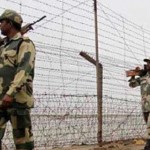Predictability of outcomes is the focus of all scientific endeavours; but in military operations, being predictable can be a death sentence. Manohar Parrikar, who was in Mumbai a week ago, leading a public discussion on India’s defence capabilities, hinted at a doctrinal change in India’s military stance towards Pakistan and its terror proxies: the audience was caught by surprise.
“Unpredictability in your response is the biggest weapon,” India’s defence minister said, replying to a question from Gateway House regarding India’s future response to attacks like the one on the army brigade headquarters in Uri on September 18 that killed 19 servicemen. This had prompted the Indian government’s first-ever publicly acknowledged “surgical strikes” on terrorists’ launch areas in Pakistan-occupied Kashmir on September 28-29.
“We did surgical strikes this time, but next time, the response can be different,” Parrikar said. “If I create a pattern, a pattern will be recognised – and countered.”
This was a watershed moment because, typically, India’s official response to such attacks in the past, under successive governments, has been largely restricted to rhetoric and talk of diplomatic isolation of Pakistan. In line with this policy, the Indian army too had kept its retaliatory actions to provocations from the Pakistani side very targeted and under wraps. For instance, in 2011, under the codename Operation Ginger, Indian paratrooper commandos did cross the LoC into Pakistan. They targeted only one Pakistani post, named Police Chowki, to avenge the decapitation of two Indian soldiers from the Rajput and Kumaon regiments at their remote post a few months earlier.
In contrast, the strikes last month reportedly targeted six launch pads used by terrorists. Among these apparently were, Athmuqam, Bhimber, Kel, Lipa, and Tattapani, all located within 5 km of the LoC, but spanning an arc of roughly 200 km.
Considering the risks in such a complex operation and the possibility of a Pakistani response, it was quite clear that this time around it was the high military brass and India’s civilian leadership that was driving the response.
Now, by publicly owning up to its role in the strikes last month, India has put its military stance closer to that of powers like the United States, Russia, and Israel. This means India has thrown out its old rulebook of non escalation and the virtue of strategic restraint in favour of a more aggressive policy. While it is difficult to predict precisely what India’s response to the next terror attack will be under the new policy, it will definitely force the perpetrators to think more carefully than they have done before about the repercussions of their actions.
Aditya Phatak is a Senior Researcher at Gateway House.
This blog was exclusively written for Gateway House: Indian Council on Global Relations. You can read more exclusive blogs here.
For interview requests with the author, or for permission to republish, please contact outreach@gatewayhouse.in, or call 022 22023371.
©Copyright 2016 Gateway House: Indian Council on Global Relations. All rights reserved. Any unauthorized copying or reproduction is strictly prohibited.


